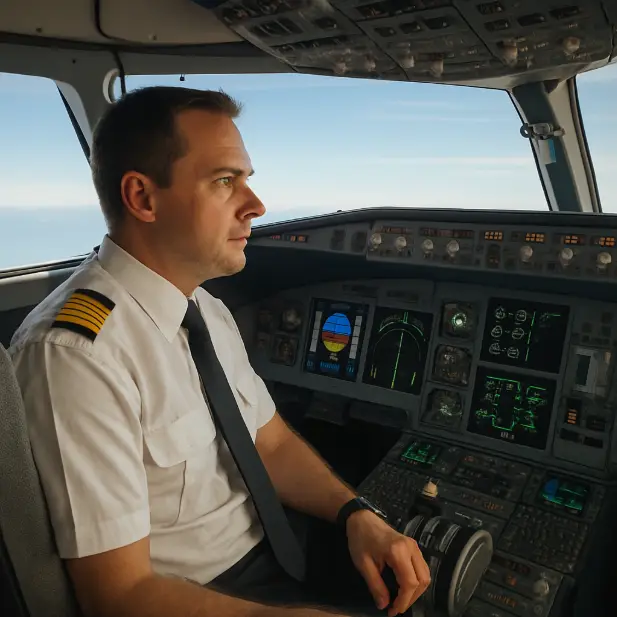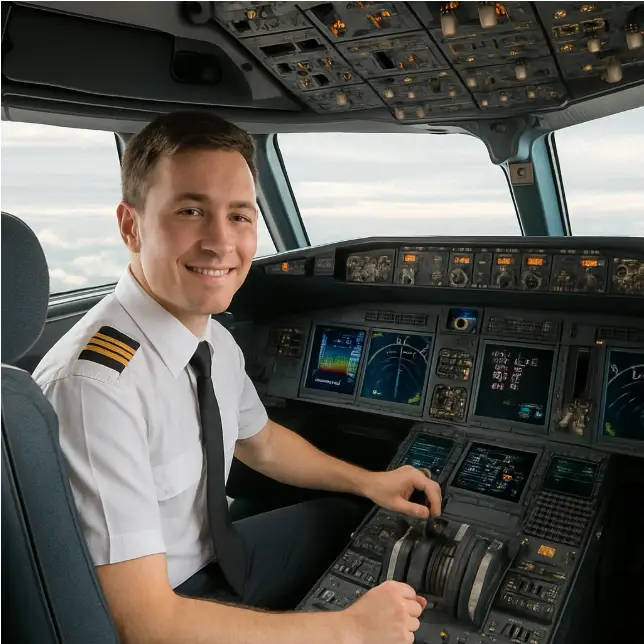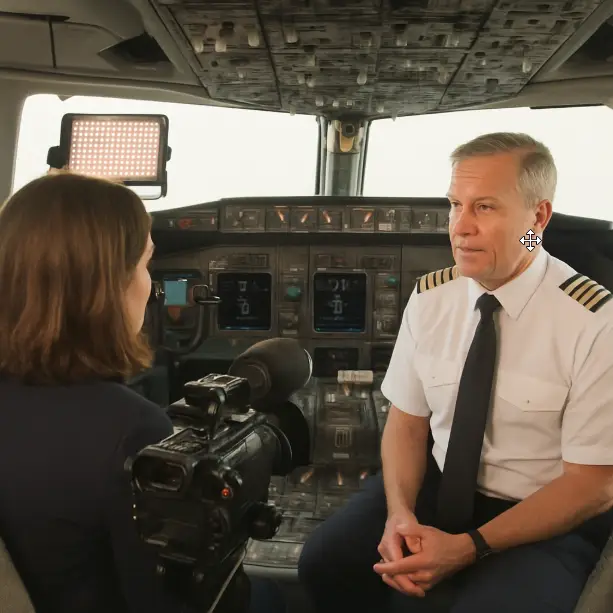Speed of Flight History: From Wright Brothers to Supersonic
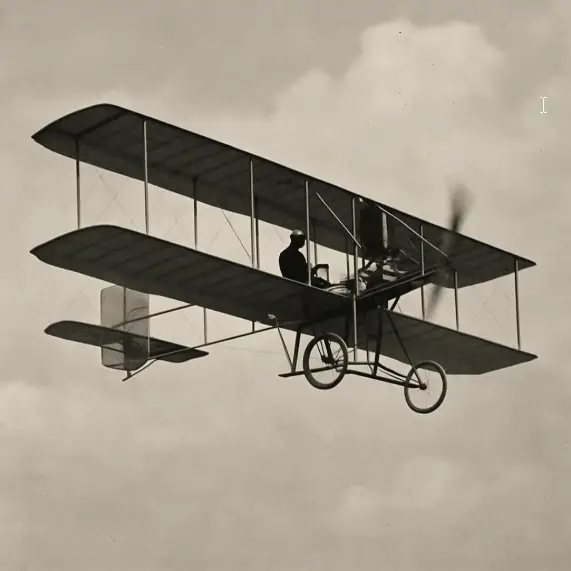
- aviatorpro_6714
In the early 20th century, the Wright brothers achieved the first powered flight at Kitty Hawk, North Carolina, in 1903. This historic event marked the dawn of aviation and sparked a global fascination with the potential of flight. However, the speeds achieved by the Wright Flyer and subsequent aircraft were modest. The focus was primarily on achieving sustained flight rather than breaking speed records.
Pioneering Designs
The first aircraft were rudimentary, with designs that prioritized lift over speed. The Wright Flyer, made of wood and cloth, was a simple biplane with a wingspan of 12.3 meters. It achieved a top speed of just 10.9 km/h, a modest beginning for what would become a relentless pursuit of speed.
Engineers soon realized that to increase speed, they needed to refine aircraft structures. The introduction of metal frames and more aerodynamic shapes marked the beginning of significant design changes. These early innovations laid the groundwork for future developments in aviation technology.
Global Fascination
The success of the Wright brothers spurred a worldwide interest in aviation. Countries around the globe began investing in research and development, hoping to harness the power of flight. This era saw a proliferation of aviation clubs and competitions, encouraging inventors and pilots to experiment with new designs.
Airshows became popular, showcasing the latest in aviation technology and inspiring future generations of engineers. These events were crucial in spreading knowledge and sparking curiosity about the possibilities of flight. As the public’s fascination grew, so did the investment in faster and more efficient aircraft.
The Role of World War I
World War I played a pivotal role in advancing aviation technology. The war accelerated the development of aircraft as nations recognized the strategic advantages of air superiority. Fighter planes and bombers were introduced, with designs that focused on speed and maneuverability.
Military needs pushed engineers to innovate rapidly, leading to the creation of faster and more agile aircraft. The lessons learned during the war would influence post-war aviation, setting the stage for the rapid advancements of the 1920s and 1930s.
The Golden Age of Aviation
The 1920s and 1930s, known as the Golden Age of Aviation, saw rapid advancements in aircraft design and performance. Pilots and engineers began to push the boundaries of speed, leading to several key developments:
Streamlining Innovations
Aircraft designs underwent significant changes to reduce drag and increase speed. The adoption of monoplane configurations, replacing the slower biplane designs, was a major step forward. Streamlining wasn’t just about aesthetics; it was a technical necessity to achieve higher speeds.
Retractable landing gear became a standard feature, further reducing drag and improving aerodynamic efficiency. These innovations allowed aircraft to achieve unprecedented speeds, setting the stage for future breakthroughs. Engineers also focused on refining wing shapes, experimenting with various designs to find the perfect balance of lift and speed.
Engine Advancements
The development of more powerful piston engines revolutionized aviation. These engines allowed aircraft to reach higher altitudes and speeds, opening up new possibilities for both military and civilian applications. Engineers worked tirelessly to improve engine efficiency and reliability, crucial factors in achieving higher performance.
Turbochargers and superchargers were introduced, enabling engines to perform better at high altitudes where the air is thinner. These technological leaps were instrumental in pushing the limits of speed and range, setting new records in aviation history.
Racing and Record-Setting
Air races became popular events, drawing crowds eager to witness the latest feats of speed and innovation. Pilots competed fiercely, each determined to set new speed records and push the boundaries of what was possible. Notable achievements during this era included Charles Lindbergh’s solo transatlantic flight in 1927, a testament to both human endurance and technological prowess.
Howard Hughes’ around-the-world flight in 1938 further demonstrated the potential of aviation technology. These record-setting flights not only captivated the public’s imagination but also spurred further advancements in aircraft design and performance.
Breaking the Sound Barrier
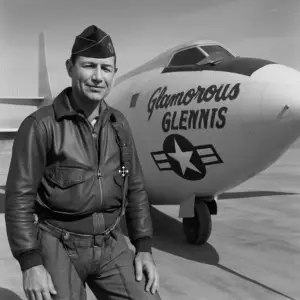
The quest to break the sound barrier was one of the most significant challenges in the history of high-speed flight. The sound barrier, or Mach 1, represents the speed of sound in air, approximately 767 miles per hour (1,235 kilometers per hour) at sea level.
Challenges of Supersonic Flight
Breaking the sound barrier was not just a matter of achieving high speeds; it involved overcoming significant technical challenges. As aircraft approached Mach 1, they encountered increased aerodynamic drag and stability issues. These challenges required innovative solutions in both design and materials.
Engineers had to develop new control surfaces and structural reinforcements to handle the intense forces experienced during supersonic flight. The phenomena of shock waves and sonic booms presented additional hurdles, requiring a deeper understanding of aerodynamics. The quest to overcome these challenges drove significant advancements in aviation technology.
The Bell X-1 Breakthrough
On October 14, 1947, U.S. Air Force pilot Chuck Yeager made history by becoming the first person to fly faster than the speed of sound in the Bell X-1 aircraft. The X-1 was a rocket-powered research plane designed specifically to explore high-speed flight. Its bullet-shaped fuselage and thin wings were optimized for supersonic speeds.
Yeager’s achievement opened the door to supersonic flight and marked a turning point in aviation history. This milestone demonstrated that controlled supersonic flight was possible, paving the way for further developments in high-speed aviation. The success of the Bell X-1 inspired a new era of research and innovation.
Supersonic Developments
Following Yeager’s historic flight, several countries invested heavily in supersonic aircraft development. The 1950s and 1960s saw the introduction of supersonic fighter jets, such as the F-100 Super Sabre and the MiG-19, capable of reaching speeds greater than Mach 2. These aircraft were designed to outpace and outmaneuver any potential adversaries.
Military priorities drove the development of faster and more agile supersonic aircraft, pushing the limits of engineering and materials science. Engineers experimented with new materials and propulsion systems to achieve the desired performance. These advancements in military aviation also had significant implications for future civilian aircraft.
The Age of Supersonic Transport
The concept of supersonic passenger travel captured the imagination of the public and engineers alike. Two aircraft would eventually define this era:
The Concorde: An Icon of Speed
The Concorde, developed jointly by France and the United Kingdom, was the first supersonic passenger jet to enter commercial service. Capable of cruising at Mach 2, the Concorde could cut transatlantic flight times in half. Its iconic design and speed made it a symbol of luxury and technological achievement.
Despite its success, the Concorde faced challenges related to noise pollution and operating costs. Its sonic boom restricted it to transoceanic routes, limiting its commercial viability. However, the Concorde remains a testament to human ingenuity and the desire to push the boundaries of air travel.
The Tupolev Tu-144: A Soviet Response
The Soviet Union’s response to the Concorde was the Tupolev Tu-144. It was the first passenger aircraft to break the sound barrier, achieving this milestone in 1969. The Tu-144 faced numerous technical challenges, including issues with stability and fuel efficiency.
Despite its technical achievements, the Tu-144 only saw limited commercial service due to safety concerns and economic factors. The aircraft was eventually retired, but it remains a significant milestone in the history of supersonic flight. Its development highlighted the intense competition and ambition that characterized the Cold War era.
Legacy and Impact
The era of supersonic transport left a lasting legacy on aviation technology and design. It demonstrated the feasibility of commercial supersonic flight, inspiring future generations of engineers and designers. The lessons learned from the Concorde and Tu-144 continue to influence modern aircraft development.
The pursuit of supersonic transport highlighted the challenges of balancing speed with environmental and economic considerations. While the Concorde and Tu-144 are no longer in service, their impact on aviation history is undeniable. They remain symbols of human ambition and the quest to conquer the skies.
Modern High-Speed Flight
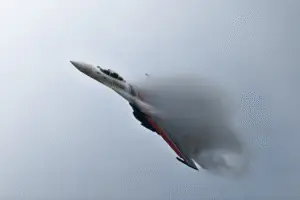
by C Joyful (https://unsplash.com/@alonly)
Advancements in high-speed flight have continued into the modern era, with significant developments in both military and civilian aviation.
Cutting-Edge Military Aircraft
Military aircraft continue to push the boundaries of speed and performance. The SR-71 Blackbird, developed in the 1960s, remains one of the fastest aircraft ever built, capable of reaching speeds over Mach 3. Its sleek design and advanced materials allowed it to evade enemy radar and fly reconnaissance missions at high altitudes.
Modern fighter jets, such as the F-22 Raptor and the Eurofighter Typhoon, incorporate advanced aerodynamics and propulsion systems to achieve high-speed capabilities. These aircraft are equipped with cutting-edge avionics and stealth technology, enhancing their performance and survivability in combat scenarios. The continuous evolution of military aviation drives innovation and sets new benchmarks for speed and agility.
Civilian Supersonic Projects
In recent years, there has been renewed interest in developing civilian supersonic aircraft. Several companies are working on designs for new supersonic jets that promise faster travel times while addressing the environmental and noise concerns that plagued earlier models. These projects aim to make supersonic travel more accessible and sustainable.
Advancements in materials science and propulsion technology are key to overcoming the challenges of supersonic travel. Engineers are exploring innovative solutions, such as quieter engines and more efficient aerodynamics, to create aircraft that can operate on a wider range of routes. The future of civilian supersonic flight holds the promise of revolutionizing air travel.
Emerging Technologies and Trends
The pursuit of high-speed flight has led to the exploration of emerging technologies and trends. Hypersonic travel, defined as speeds greater than Mach 5, is an area of active research and development. Hypersonic vehicles could revolutionize air travel and open new frontiers in space exploration.
Innovations in propulsion systems, such as scramjets and pulse detonation engines, are being explored to achieve these ambitious speed goals. The potential for hypersonic travel extends beyond aviation, with applications in defense, space exploration, and global transportation networks. The future of high-speed flight is poised to redefine the possibilities of human mobility.
Technical Developments in High-Speed Flight
The history of high-speed flight is marked by several key technical developments:
Aerodynamics: The Science of Speed
Understanding and optimizing aerodynamics has been crucial to achieving higher speeds. Engineers have developed advanced wing designs, such as delta wings and swept wings, to minimize drag and improve stability at high speeds. These innovations have enabled aircraft to achieve greater efficiency and performance.
Computational fluid dynamics (CFD) has become a vital tool in the design process, allowing engineers to simulate and analyze airflow around aircraft. This technology has led to more precise and effective aerodynamic designs, pushing the boundaries of what is possible. The ongoing refinement of aerodynamics remains a cornerstone of high-speed flight innovation.
Propulsion Systems: Powering the Future
The evolution of propulsion systems has played a vital role in high-speed flight. The transition from piston engines to jet engines, and later to rocket engines, has enabled aircraft to reach new speed thresholds. Turbojet, turbofan, and scramjet engines represent significant milestones in propulsion technology.
Engineers continue to explore new propulsion concepts, such as hybrid-electric systems and advanced combustion technologies. These innovations aim to improve efficiency, reduce emissions, and increase performance. The quest for more powerful and sustainable propulsion systems is central to the future of high-speed aviation.
Materials and Structures: Building for Speed
Advancements in materials science have allowed for the creation of lighter and stronger aircraft structures. The use of composites and advanced alloys has improved performance and durability, enabling higher speeds and greater efficiency. These materials offer significant advantages in terms of weight, strength, and resistance to high temperatures.
The development of smart materials and adaptive structures holds promise for future aircraft designs. These technologies could enable aircraft to change shape in flight, optimizing performance for different speed regimes. The integration of advanced materials and structures is essential to the continued progress of high-speed flight technology.
The Future of High-Speed Flight
The future of high-speed flight holds exciting possibilities. Hypersonic travel, defined as speeds greater than Mach 5, is an area of active research and development. Hypersonic vehicles could revolutionize air travel and open new frontiers in space exploration.
Challenges and Opportunities
While the pursuit of high-speed flight presents numerous challenges, including technical, environmental, and regulatory hurdles, it also offers significant opportunities. Faster travel times, increased connectivity, and technological innovation are just a few of the potential benefits. Addressing these challenges requires collaboration across industries and disciplines.
Environmental concerns, such as noise pollution and emissions, must be carefully managed to ensure sustainable growth in high-speed aviation. Regulatory frameworks will need to evolve to accommodate new technologies and ensure safety. The journey toward hypersonic travel is a complex but rewarding endeavor.
Pioneering Projects and Innovations
Several pioneering projects are underway to develop the next generation of high-speed aircraft. Companies and research institutions are collaborating to create vehicles capable of achieving hypersonic speeds. These projects focus on innovative propulsion systems, advanced materials, and cutting-edge aerodynamics.
The potential applications of hypersonic technology extend beyond commercial aviation, with implications for defense, space exploration, and global transportation networks. These pioneering efforts are driving the future of high-speed flight and inspiring a new era of exploration and discovery.
The Vision for the Future
As we look to the future, the vision for high-speed flight is one of continued innovation and exploration. The quest for speed will inspire new technologies, reshape industries, and redefine the boundaries of human mobility. The pursuit of high-speed flight is a testament to human curiosity and determination.
The future holds the promise of faster, more efficient, and more sustainable air travel. As new technologies emerge and challenges are overcome, the possibilities for high-speed flight are boundless. The journey toward the skies continues, driven by a relentless spirit of exploration and discovery.
Conclusion
The history of the speed of flight is a testament to human curiosity and determination. From the Wright brothers’ first flight to the cutting-edge supersonic and hypersonic projects of today, each milestone reflects a commitment to pushing the boundaries of what is possible. As we look to the future, the quest for speed will continue to inspire and drive advancements in aviation and aerospace technology.

